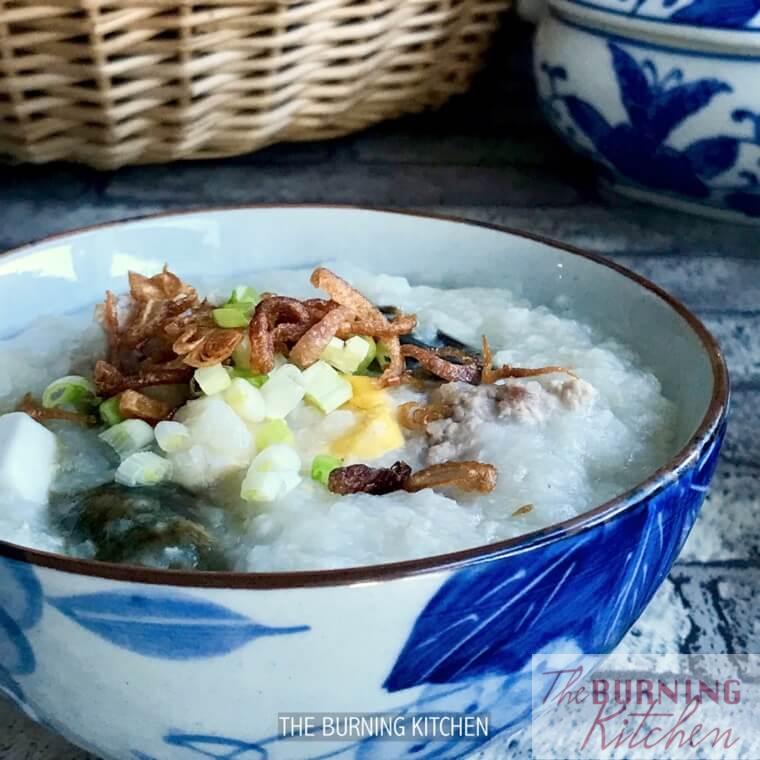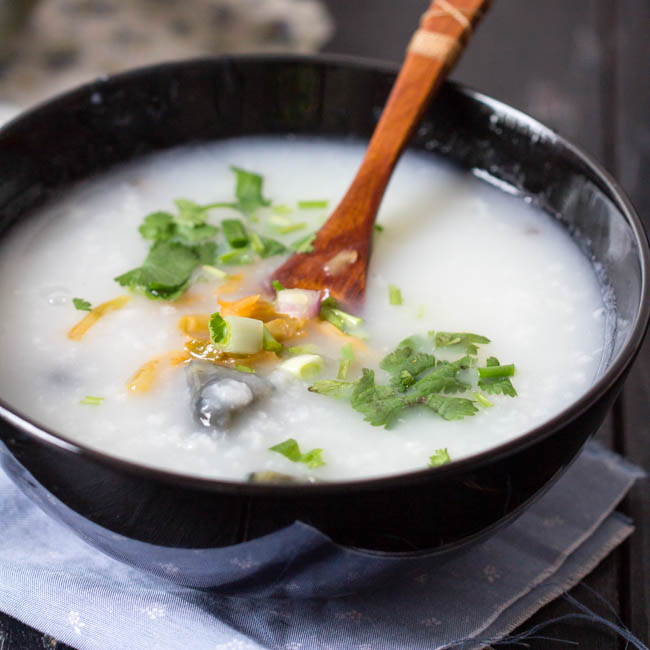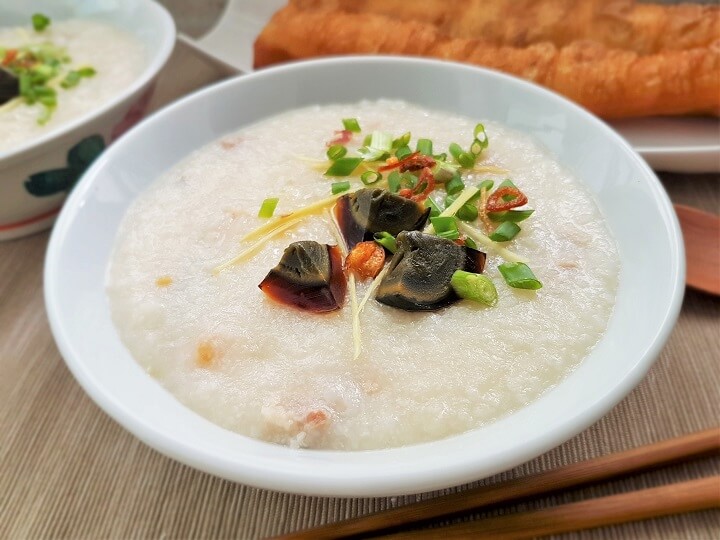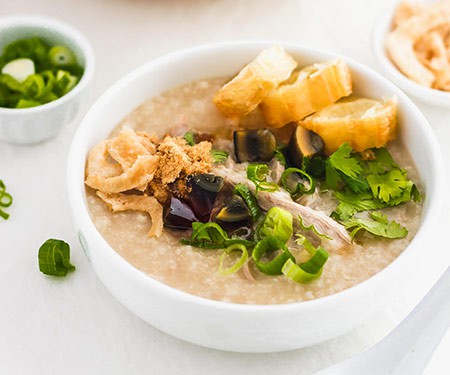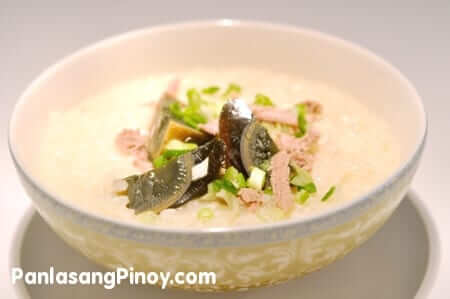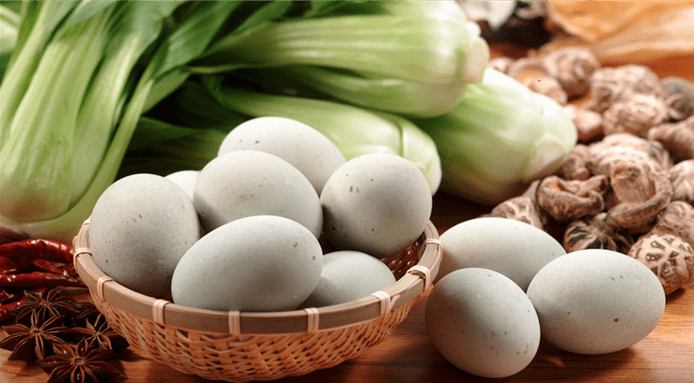Century egg
pi dan, 1000 year old egg, 皮蛋
Century eggs , also known as alkalized or preserved egg, are a Chinese egg-based culinary dish made by preserving duck, chicken, or quail eggs in a mixture of clay, ash, salt, quicklime, and rice hulls for several weeks to several months, depending on the processing method. Through the process, the yolk becomes dark greenish grey in color, with a creamy consistency and strong flavor due to the hydrogen sulfide and ammonia present, while the white becomes dark brown in color, with a translucent jelly-like appearance and salty flavor. The transforming agent in the century egg is an alkaline salt, which gradually raises the pH of the egg to around 9–12 during the curing process. This chemical process breaks down some of the complex, flavorless proteins and fats, which produces a variety of smaller flavorsome compounds.[citation needed] Some eggs have patterns near the surface of the egg white which are likened to pine branches. These patterned eggs are regarded as having better quality than the normal century eggs and are called Songhua eggs (Chinese: 松花蛋), variously translated as pine flower eggs or pine-patterned eggs.[citation needed]
Source: Wikipedia
Recipes

Century Eggs : 7 Steps (with Pictures) - Instructables
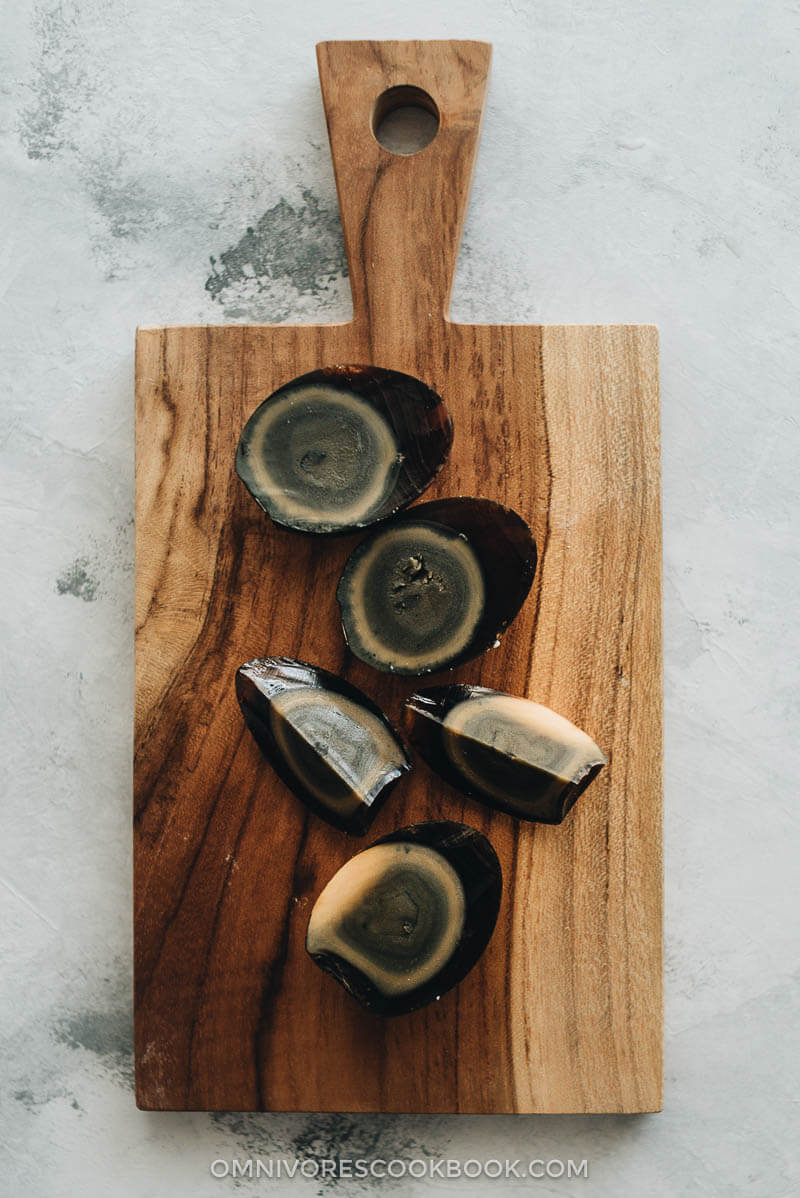
Century Egg (皮蛋, Pí Dàn) - Omnivore's Cookbook
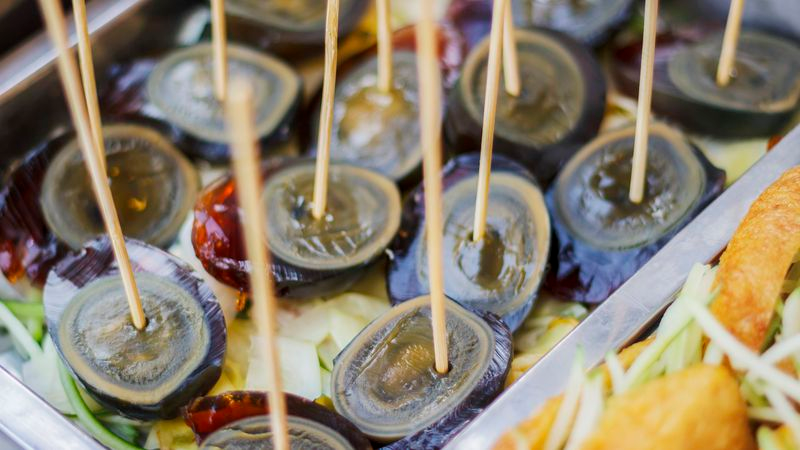
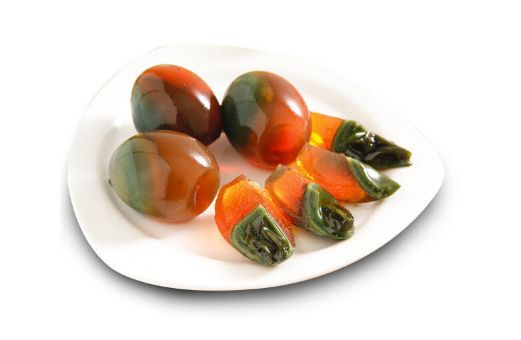

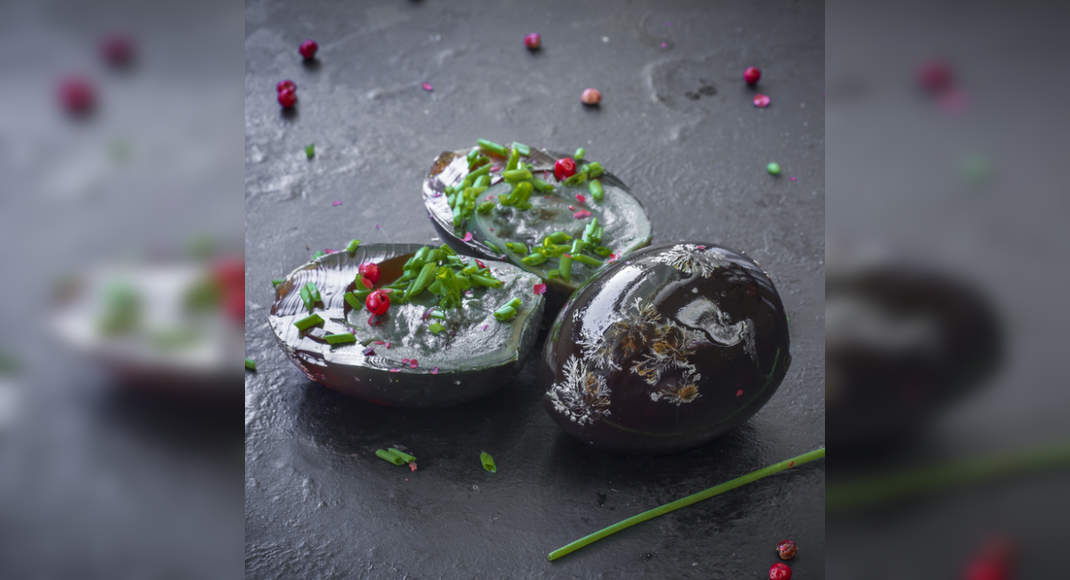

:max_bytes(150000):strip_icc()/__opt__aboutcom__coeus__resources__content_migration__serious_eats__seriouseats.com__recipes__images__2013__01__20130129-2388240-century-egg-salad-edit-54aac64701da418e8c7ca19c1f498e1b.jpg)
